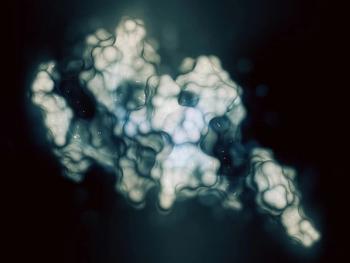
Flow-MRD Sensitive and Appropriate Tool for Evaluating Responses in Newly Diagnosed Multiple Myeloma
A substudy of the European‐Myeloma-Network‐02/Hovon‐95 trial suggests flow cytometry–based monitoring of minimal residual disease is effective for longitudinal evaluation of responses in patients with multiple myeloma.
Flow cytometry–based monitoring of minimal residual disease (flow-MRD) assessment was found to be an appropriate tool for advanced response evaluation and for longitudinal MRD monitoring in patients with newly diagnosed multiple myeloma, according to research from the Nordic Myeloma Study Group (NMSG) substudy of the European‐Myeloma-Network‐02/Hovon‐95 (EMN02/HO95) trial (NCT01208766).
The dynamics for MRD were compared with biochemically assessed changes and determined that flow-MRD is a sensitive tool for evaluating responses subsequent monitoring of these patients.
“The primary objective of the flow-MRD study was to evaluate the depth and dynamic of flow-MRD and the risk of disease progression in [patients with multiple myeloma] in post treatment CR during lenalidomide [Revlimid] maintenance,” the investigators wrote. “Our data confirm that flow-MRD is a sensitive tool for response evaluation and subsequent patient monitoring.”
Patients undergoing bone marrow aspiration for response assessment before starting maintenance therapy were eligible and enrolled in the substudy between March 1, 2012, and March 31, 2014. Data cutoff was September 18, 2019.
Bone marrow aspirate samples for 53 patients were sent for first response assessment by flow cytometry, with confirmed clinical response status of complete response or better and adequate bone marrow sample observed in 15. Eighty percent of the 15 patients with clinical complete response or stringent complete response were malignant plasma cells (mPC) negative.
A total of 34 patients were eligible for longitudinal flow-MRD assessments, with complete response at first response assessment noted for 19 patients. This group includes samples for 15 patients previously mentioned with an additional 4 patients for whom response assessment was not available.
Of 20 patients who achieved complete response or stringent complete response during observation where adequate bone marrow samples were analyzed, sustained flow-MRD negativity upon acquisition of 1.2-19.5 × 106 cells was reported in 13 patients.
Increased MRD levels in the bone marrow were observed in 6 of the 20 patients, which preceded biochemically assessed disease progression by 5.5 months and clinical progression by 12.6 months. The mean doubling time for malignant plasma cells for these 6 patients was 1.8 months (95% CI, 1.4-2.3).
Monitoring MRD via invasive bone marrow sampling is limited by not accounting for spatial heterogeneity, which could lead to false-negative results, according to the investigators.
Looking ahead, the investigators suggest conducting future clinical research to examine the use of peripheral blood for the detection of and for comparing results obtained in bone marrow regarding MRD.
“This [research] offers the opportunity for early intervention and such strategies should be tested in clinical trials,” the investigators concluded.
Reference
Schmitz A, Brøndum RF, Johnsen HE, et al. Longitudinal minimal residual disease assessment in multiple myeloma patients in complete remission - results from the NMSG flow-MRD substudy within the EMN02/HO95 MM trial. BMC Cancer. 2022;22(1):147. doi:10.1186/s12885-022-09184-1
Newsletter
Stay up to date on recent advances in the multidisciplinary approach to cancer.

















































































